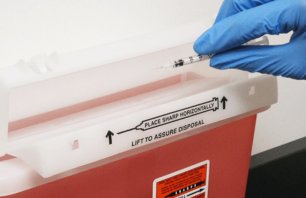Looking ahead to the new year presents a great opportunity to catch up on some new and emerging requirements to ensure compliance for healthcare organizations. Here are some key changes on the horizon for 2020.
The EPA’s Subpart P
The Environmental Protection Agency (EPA) has introduced a new rule—commonly referred to as Subpart P—that pertains to hazardous pharmaceutical waste disposal. Applicable to all healthcare facilities, it requires small and large-quantity waste generators to follow the rule and notify the EPA that they are doing so. Very small quantity generators (VSQGs) must let the EPA know if they are choosing not to follow Subpart P. As part of the rule, the EPA revised what it regulates in this area and how it classifies a container as empty, including P-listed containers. In addition, the agency clarified regulations regarding nicotine. While nicotine and empty containers that held nicotine products are considered P-listed waste, the EPA edited the P-listing to exclude FDA-approved, over-the-counter nicotine replacement therapies, such as patches, gums and lozenges. Find more details on what you need to know about this new rule, as we break down the details on our EPA Resource Hub.
State Waste Management Efforts
Several states are reviewing their regulated waste management requirements. Illinois and North Carolina, for example, recently made changes while other states, such as Virginia, are currently discussing potential updates. It is also trending among states to examine possible funding strategies for pharmaceutical and sharps take-back programs. California, Colorado and New York among others are actively pursuing new regulations.
OSHA’s Alignment with the Globally Harmonized System
The Occupational Safety and Health Administration (OSHA) gave notice of proposed rulemaking for the Hazard Communication Standard, as the agency aims to align requirements with the latest version of the Globally Harmonized System—an internationally agreed-upon system managed by the United Nations for chemical classification and labeling. Further developments should unfold in the coming months.
Helping Organizations Navigate New Rules
The regulatory environment is always changing, and it can be difficult to keep up with the latest developments given the myriad priorities healthcare organizations face. To learn more about how Stericycle can guide regulatory compliance, visit SteriSafeSM Compliance or visit our EPA Hub to stay up-to-date on the EPA Rule and state adoption.



